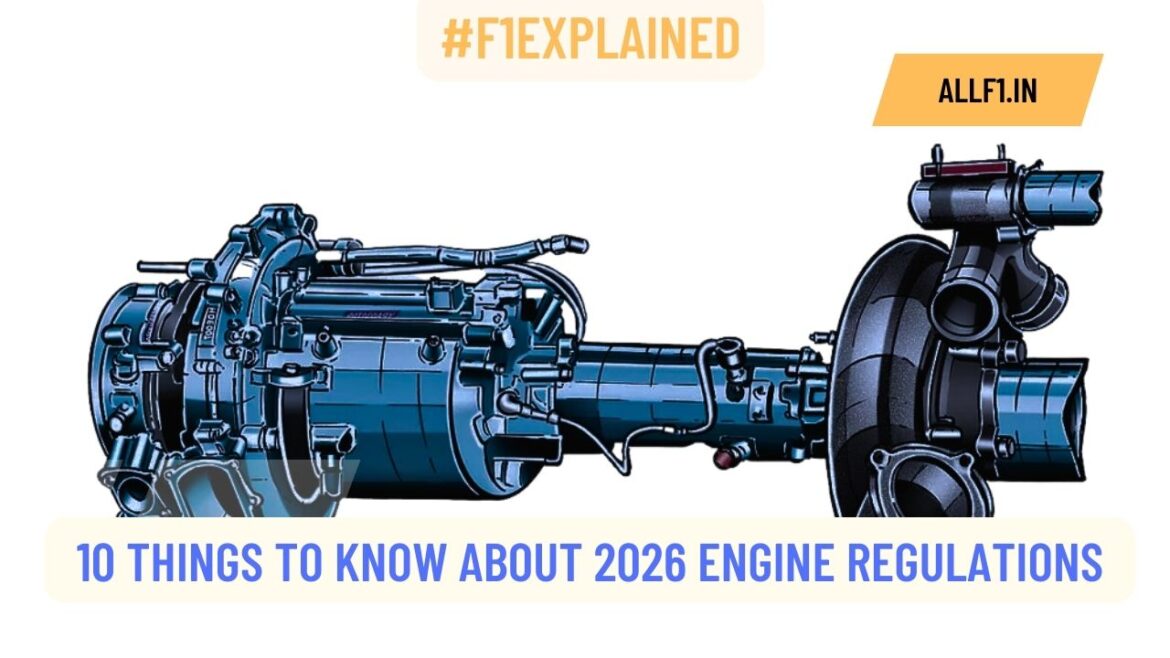Revving Up for a Green Future in Formula One
Formula One, the pinnacle of motorsport, is set to undergo a significant transformation in 2026 with the introduction of new engine regulations. These regulations, approved by the FIA World Motor Sport Council, aim to align the sport with sustainable practices and reduce its environmental impact. In this article, we will delve into the key aspects of the 2026 engine regulations, exploring their implications for sustainability, innovation, and the future of Formula One.
1. The Drive Towards Sustainability
Formula One has made a bold commitment to becoming carbon neutral by 2030, and the 2026 engine regulations play a crucial role in achieving this goal. One of the most significant changes is the introduction of 100% sustainable fuels. These “drop-in” fuels will ensure that no new fossil fuel carbon is released during races, promoting a greener and more sustainable approach to racing.
2. Embracing Electric Power for 2026 Engine Regulations
The 2026 engine regulations emphasize the integration of electrical power in Formula One cars. With a focus on sustainability, the new power units will harness more electrical energy and enhance energy recovery. The MGU-K, an essential component of the energy recovery system, will produce nearly three times the electrical power compared to the current power units. This shift towards increased electrical power not only aligns with the global trend towards electrification but also paves the way for more innovative and efficient racing.

3. Less Fuel, More Horsepower
While Formula One aims to increase electrical power, the 2026 engine regulations also seek to reduce fuel consumption without compromising performance. Despite using more energy, the new engines are expected to provide over 1,000 horsepower, thanks to advancements in technology and the optimization of power delivery. The gradual decrease in fuel loads over the years, from 160 kilograms in 2013 to 100 kilograms in 2020, and an aim for 70 kilograms in 2026, demonstrates Formula One’s commitment to efficiency and sustainability.
4. Striking a Balance between Innovation and Cost
As Formula One enters the cost-cap era, the 2026 engine regulations take into account the need to balance innovation with cost control. These regulations will introduce an engine-specific cost cap, encouraging teams to find creative and cost-effective solutions. Some components, such as the MGU-H, have been removed due to their lack of road relevance, streamlining the power units and reducing complexity. This approach ensures that Formula One remains at the forefront of technological advancements while maintaining financial sustainability.
5. The Expansion of Engine Manufacturers
The introduction of the 2026 engine regulations has attracted a broader range of engine manufacturers to Formula One. Alpine, Audi, Ferrari, Honda, Mercedes, and Red Bull (in partnership with Ford) will make up the grid in 2026. This diverse lineup not only enhances competition but also promotes technological collaboration and innovation among manufacturers.
6. Driver Concerns and Technical Challenges
While the 2026 engine regulations pave the way for a greener and more sustainable future, some concerns and technical challenges have emerged. Red Bull team boss Christian Horner has expressed reservations about the 50 50 split between internal combustion engines and electrical power. He believes that this ratio could impact wheel-to-wheel racing and force drivers to downshift on the straights to recharge the batteries, affecting the overall racing experience.
7. Seeking the Ideal Formula
Finding the right balance between combustion power and electrical power is crucial to ensuring thrilling wheel-to-wheel racing. Horner suggests that a slight tweak to the ratio between the two power sources could have a significant impact on the racing dynamics. The regulations are still subject to refinement, and there is an opportunity to address these concerns to preserve the essence of Formula One.
8. The Prospects of Innovation and Collaboration
Despite the challenges and concerns, the 2026 engine regulations present an opportunity for innovation and collaboration among teams, manufacturers, and the FIA. With the inclusion of sustainable fuels, increased electrical power, and reduced fuel consumption, Formula One is poised to lead the way in sustainable motorsport and inspire the wider automotive industry.
9. The Road Ahead
As Formula One gears up for the implementation of the 2026 engine regulations, extensive research, development, and testing will be undertaken by the teams and manufacturers. Simulations and data analysis will play a vital role in fine-tuning the power units and addressing any limitations or concerns. The collective effort of the Formula One community will shape the future of the sport and define its role in a sustainable world.
10. Conclusion
The 2026 engine regulations mark a significant milestone in the history of Formula One. With a focus on sustainability, increased electrical power, and reduced fuel consumption, the sport is embracing the challenges of the future head-on. While concerns and technical challenges exist, the Formula One community is committed to balancing innovation, performance, and sustainability. As the world shifts towards a greener future, Formula One is leading the charge and revolutionizing motorsport for generations to come.




